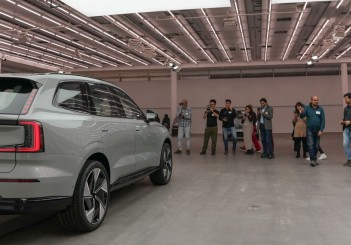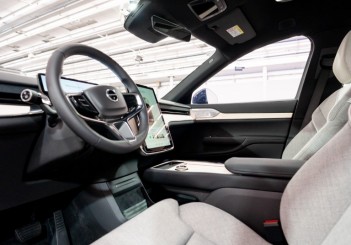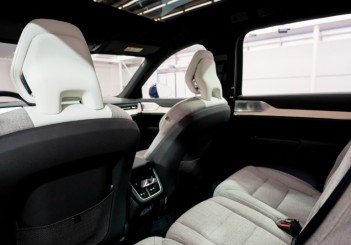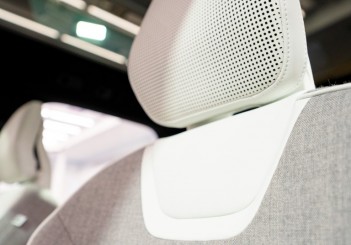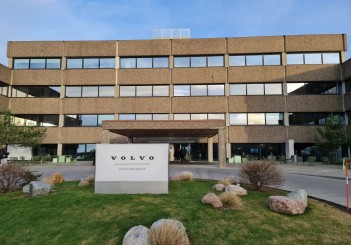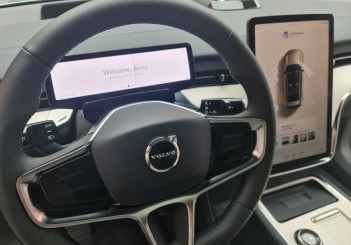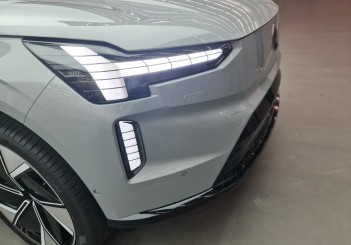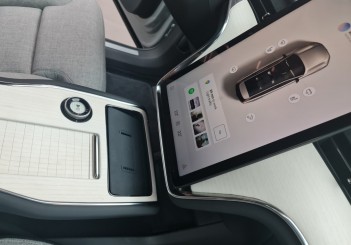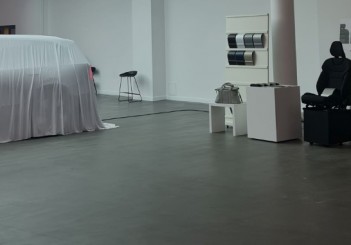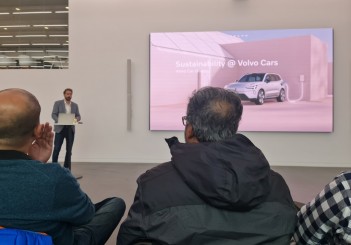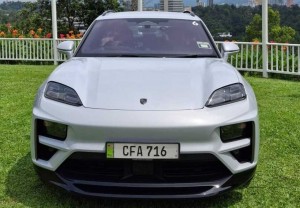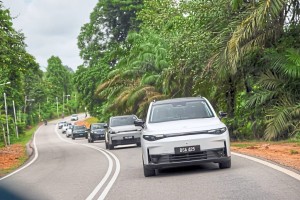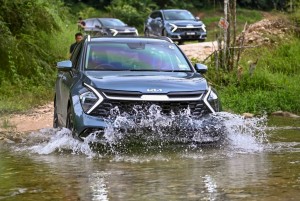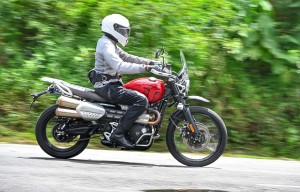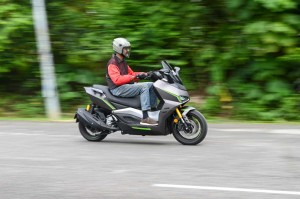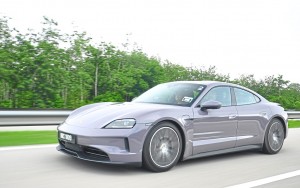GOTHENBURG: Volvo. Safety. The two terms have become inseparable.
You have probably heard that word association a million times. And indeed, it has been drilled into the public consciousness over the years.
The creator of the three-point safety belt, inflatable curtain and blind spot detection system continues to build on its core strength to lend added gravitas.
While realistically accidents will still happen as a result of human errors, Volvo on its part sets an exceptionally high safety bar as it strives to make cars that are as difficult as possible to be seriously injured or to die in, with autonomous technology seen as the great leveller.
In recent years, the idea of going electric has been a rallying cry within Volvo corridors, gaining momentum with each product launch.
Volvo has gone on record to say that it will make only battery electric vehicles (BEVs) by 2030 and be a climate-neutral company by 2040.

In the interim, it aims to have half of its sales comprised 50% of BEVs by 2025. Volvo's Malaysian unit is more ambitious, aiming to hit BEV sales of 75% by that time.
In 2023, that will culminate with the series production of the EX90, the all-electric version of the XC90. To be built at Volvo's plants in China and US, the future EV flagship will hit showrooms in early 2024. (estimated US$80,000 or RM355,000)
Malaysian customers will have to cool their heels as the EX90 is only expected to be available at the tail end of next year.
In the EX90, all the know-how have come together to forge a brand new product that takes lessons from the past and strides into the future with new confidence.
Company CEO Jim Rowan said the EX90 "is the safest car Volvo has ever produced.”
Starting with the EX90, Volvo will reveal one new fully electric car each year.

A group of Malaysian media members were recently in Gothenburg to get up close and personal with the EX90.
The EX90 will initially be available with dual motors — one on each axle for an all-wheel drive setup, and powered by a 111 kWh Li-ion battery pack.
The base version drums up 408hp and 770Nm of torque, while a more potent one releases 517hp and 910Nm of torque. Range is expected to be up to 600km. Charging from 10% to 80% takes around 30 minutes.
The most advanced Volvo car yet will launch as a seven seater but it could actually be configured as a 5-seat vehicle with a rear-wheel motor. But Rowan said that is not in the pipeline for now. At present, only the XC40 and C40 BEVs are available with rear-drive motor.

The EX90 shown to the press was a life-size mock-up model purely used for static display.
The EX90 boasts a characteristic Scandinavian design where form follows function.
The front shows off a powerful, compact and athletic look, while the side reveals a stretched clean surface without any clutter. The rear emphasises the width of the vehicle, which is actually wider, longer and rides lower than the XC90.
Headlight design is a conversation piece with double-stacked "Thor's Hammer" LED daytime running lights opening up at night to reveal the main lamps. Animated light graphics, also seen in the taillights, lend an exclusive feel.
Safety tech have become smarter and more personal.

The EX90 has an invisible safety shield enabled by the latest sensing technology, inside and outside. State-of-the art sensors like cameras, radars and lidar are connected to the car’s high-performance computers, where NVIDIA DRIVE runs Volvo Cars’ in-house software to create a real-time, 360-degree view of the world.
Sensors also contribute to improve the reliability and overall performance of the assisted driving function Pilot Assist, with a new steering support while changing lanes.
As the first Volvo to be defined by its software, the EX90 offers a number of innovations. They include an in-car radar to monitor driver engagement; occupant sensing; bi-directional charging; Dolby Atmos surround sound technology; and ability to use a smartphone as a car key.
Special sensors and cameras, powered by an in-house developed algorithm, gauge eye gaze concentration.

The technology allows the EX90 to understand when the driver is distracted, drowsy or otherwise inattentive, beyond what has been possible in a Volvo car to date.
It’ll alert the driver, first softly nudging, then more insistent. And if the unthinkable happens, and he falls asleep or is taken ill while driving, the EX90 is designed to safely stop and call for help.
Volvo's rear-seat reminder tech is the most advanced in the industry. Using a cabin radar, it is sensitive enough to detect the gentle breathing of a sleeping child.
If the driver forgets another person or pet is in the back seat, the EX90 would respond by not allowing the car to be locked, whilst it would remind the person to check for occupants. At the same time, the climate control system would remain activated to maintain cabin comfort.

In addition, the displays in the centre stack and in front of the driver provide information in a smart way that can be customised. Volvo shunned the videogame and smartphone premise in the design of the infotainment screen, resulting in a flat interface that present key information in a simple format without making the driver feel overwhelmed.
The electric SUV is also built to be future-proof. Its advanced sensor set including lidar prepares it to be the first Volvo that’s hardware-ready for unsupervised driving in the future.
The Swedish trip was also an opportunity to quiz the company's top executives.
As electric propulsion is at the heart of new energy vehicles, Volvo aims to develop the key components in-house.
"So we heavily invest in that," said Rowan.

Rowan (left) and Annwall.
"We used to buy the motors and inverters. We now make them ourselves including the battery management system."
Volvo expects to eventually make a large percentage of its own batteries through a joint venture with battery manufacturer Northvolt.
Apart from the traditional sales channels, Volvo is invested in car subscription and expects it to grow further.
"Subscription is promising everywhere," said co-deputy CEO Bjorn Annwall.
"Our problem is not the demand for the service. It's more a matter of how quickly we can scale up in a profitable way.

"We need to set up the right digital infrastructure, have the right credit scoring of customers and efficient operational processes when cars are handed back."
With Volvo being 82%-owned by China’s Zhejiang Geely Holding Group since 2010, the arrangement has been fruitful with a collaborative culture in place.
Annwall said the Geely family is an ecosystem of independent companies, which all look after their own future.
"It's encouraged that if a win-win opportunity (between companies) arises, we look into it whether with Geely, Zeekr, Polestar, Lynk & Co or Radar.

"For certain technical solutions, we leverage on each other's underpinnings."
With that said, Volvo is not taking any detour from what it has always stood for.
"Volvo is about safety, sustainability and giving people the freedom to move. That's our brand and that's our demographic that we go after," said Rowan in parting.
READ MORE:
Ice track driving with all-electric Volvo C40 and XC40
Volvo EX90 production delayed to 2024 by software issues

